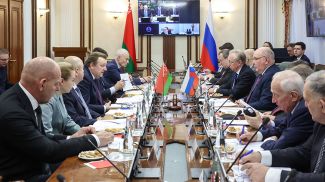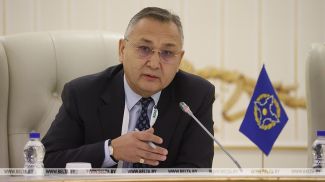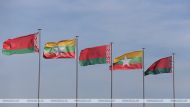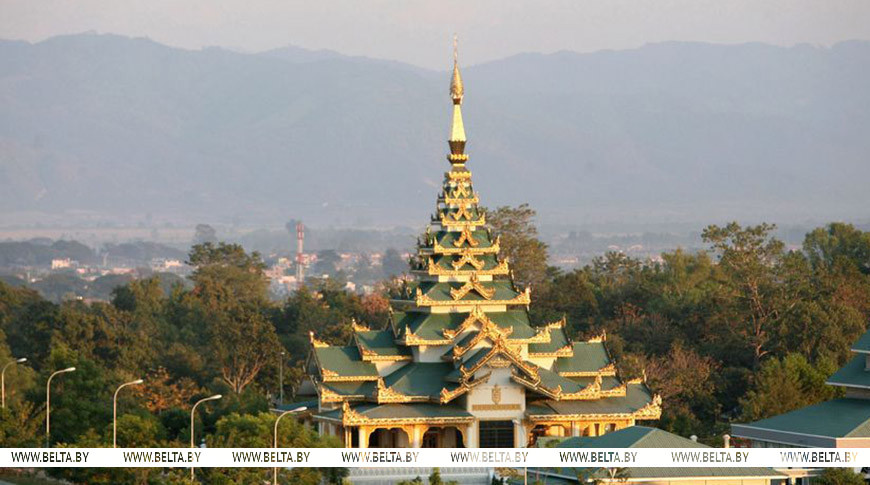
The day before, we learned about a visit of Belarusian President Aleksandr Lukashenko to Southeast Asia, specifically to Myanmar. Diplomatic relations with this country were established a quarter of a century ago. However, for many years, there was no particular momentum , despite active and sometimes successful attempts by the Belarusian government to enter the Myanmar market. Sanctions and a complex domestic political situation have not contributed to the stable development of this state. Considering that Myanmar is a coveted prize for Asian and Western players in terms of resources and regional influence, one can only imagine what trials the country still has to endure. However, recent contacts between Minsk and Naypyidaw have noticeably intensified. In March, official negotiations were held between Belarusian President Aleksandr Lukashenko and Chairman of the State Administration Council, Prime Minister of Myanmar (now Acting President of Myanmar, Chairman of the State Security and Peace Commission) Min Aung Hlaing, which gave a new impulse to bilateral relations. Now the Belarusian leader is making a return visit to Naypyidaw. Can Belarus and Myanmar build long-term cooperation and what will it be based on? Let's break it down.
What we know about Myanmar
Myanmar (formerly Burma) is a former British colony. However, in the middle of the last century, it also faced Japanese occupation. Myanmar's anti-fascist forces understood that they could not expect to receive independence from the hands of the Japanese and, at the same time, did not have excessive hopes in the British, who, as it turned out, were not opposed to destroying the USSR through the hands of Germany and Japan. Therefore, the struggle against the Japanese occupation, after the country's liberation, evolved into a confrontation with British imperialism, and in 1948, Burma officially gained independence.
With the attainment of statehood, countries have to rebuild their political system, choose their development path, and set priorities. Myanmar was no exception. We will not delve into these complexities, but will only note that it was very difficult for the young and complex state, home to more than 100 ethnic groups.
In the 1990s, the country came under U.S. and European Union sanctions, who, naturally, were deeply concerned about human rights in the Southeast Asian region. Belarus knows firsthand what lies behind such concerns.
Just one fact. The American Gene Sharp, infamous for his handbook “From Dictatorship to Democracy”, recalled: “II was brought to Burma by Robert Helvey, a former US military attache in Rangoon, who became sympathetic to the groups opposing the regime, particularly the Karen. I was asked to write some articles for Khit Pyaing, a Burmese and English journal based in Bangkok, and run by the late U Tin Maung Win, and those eventually became part of the publication known as “From Dictatorship to Democracy.”


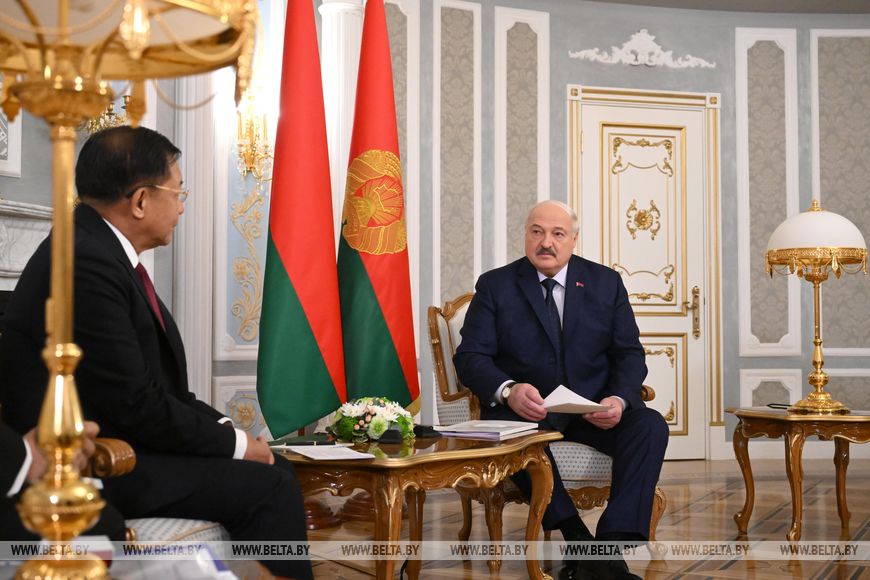
“We need to have several key projects to drive progress. Let there be just a few projects at first. But they have to be major, strategic projects that will spur further cooperation in other areas. Our interest in Myanmar is very strong,” the Belarusian leader emphasized.
Min Aung Hlaing, in turn, stated his intention to open a new chapter in relations with Belarus and bring bilateral interaction to a qualitatively new level through multi-sectoral cooperation. “Myanmar has a great interest and desire to improve economic relations. Therefore, we are keen to discuss a strategic plan to expand our contacts,” he outlined the priorities.
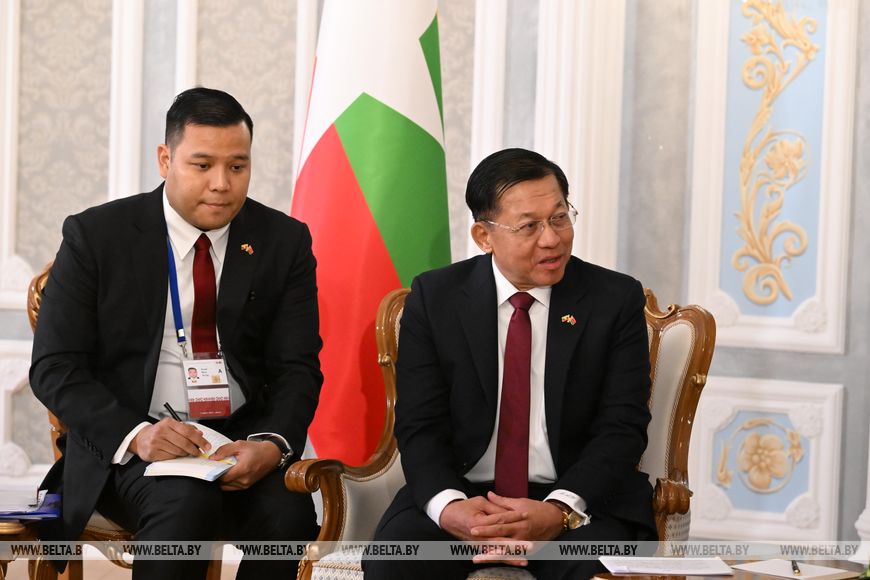
The head of the Myanmar government first of all mentioned agriculture, which is crucial for his country, and mechanical engineering. In particular, Myanmar is interested in acquiring Belarusian technologies in the agro-industrial complex, the production of agricultural machinery and equipment, and the purchase of various types of fertilizers. Another proposal from the partners from Southeast Asia is to invest in the economy of Myanmar to organize various productions. For example, the production of concrete or the cultivation and processing of rubber for tire production.
Assessing the internal political situation in Myanmar, Aleksandr Lukashenko advised the partners to do everything that is beneficial for the country. “Naturally, not everyone will like what you do. There will be sanctions, which us both have. But sanctions are a time of opportunities. Therefore, we have agreed with you to use these opportunities and strengthen and deepen relations between our states. And we will do it,” the Belarusian leader promised.

In recent years, Belarus and Myanmar have been working on a number of joint projects. These include the assembly production of medium and low-power tractors at the site of the former Zetor plant, consulting assistance by OAO Grodno Azot and the Grodno Research and Design Institute of the Nitrogen Industry and Organic Synthesis Products in modernizing nitrogen fertilizer production, the production of medications in Myanmar using the technologies of RUP Belmedpreparaty, the construction of dairy farms, and the joint production of veterinary vaccines in Myanmar.
MAZ vehicles supplies from Belarus to Myanmar, nitrogen fertilizers, medications, dry milk and baby food, and equipment for dairy production are also under discussion.
What about gemstones? As Minister of Foreign Affairs Maxim Ryzhenkov stated on the sidelines of the talks, Belarus’ jewelry industry has expressed interest in the extraction and purchase of gemstones in Myanmar, which could be used to produce jewelry already in our country.
What we know about Myanmar
Myanmar (formerly Burma) is a former British colony. However, in the middle of the last century, it also faced Japanese occupation. Myanmar's anti-fascist forces understood that they could not expect to receive independence from the hands of the Japanese and, at the same time, did not have excessive hopes in the British, who, as it turned out, were not opposed to destroying the USSR through the hands of Germany and Japan. Therefore, the struggle against the Japanese occupation, after the country's liberation, evolved into a confrontation with British imperialism, and in 1948, Burma officially gained independence.
With the attainment of statehood, countries have to rebuild their political system, choose their development path, and set priorities. Myanmar was no exception. We will not delve into these complexities, but will only note that it was very difficult for the young and complex state, home to more than 100 ethnic groups.
In the 1990s, the country came under U.S. and European Union sanctions, who, naturally, were deeply concerned about human rights in the Southeast Asian region. Belarus knows firsthand what lies behind such concerns.
Just one fact. The American Gene Sharp, infamous for his handbook “From Dictatorship to Democracy”, recalled: “II was brought to Burma by Robert Helvey, a former US military attache in Rangoon, who became sympathetic to the groups opposing the regime, particularly the Karen. I was asked to write some articles for Khit Pyaing, a Burmese and English journal based in Bangkok, and run by the late U Tin Maung Win, and those eventually became part of the publication known as “From Dictatorship to Democracy.”
Simply put, the concept of color revolutions originated and was first tested in Myanmar.

Sanctions on Myanmar began to ease in the 2010s, leading to an influx of foreign investment. The nation’s cheap labor, natural resources, strategic location, and growing domestic market attracted attention from beyond its immediate neighbors. Between 2007 and 2016, foreign direct investment in Myanmar’s economy grew elevenfold. Belarus, too, attempted to gain a foothold in this emerging market.

The current situation in Myanmar
In 2021, Myanmar was plunged into a political crisis, which exposed deep-seated ethnic conflicts and escalated into a civil war. Most tragically, this internal strife is being actively fueled by external forces.
China, with its substantial investments and a strong interest in maintaining order in Myanmar and stability along its shared border, is watching it closely. Its interests there overlap with those of India and Japan. However, as these are primarily economic matters, these partners are reluctant to interfere in Myanmar’s internal affairs, preferring to remain as observers where possible and preserve their room to maneuver.
But when politics enters the equation, trouble inevitably follows. The West is also determined to secure its influence in the region and seeks to undermine China’s positions by any means. Is it possible to do it in a fair way? Unlikely. The result is predictable: new sanctions and financial aid to the opposition. A familiar playbook.
History of Belarus-Myanmar relations
In December 2011, the-then Prime Minister Mikhail Myasnikovich paid an official visit to Myanmar. Belarus received invitations to participate in hotel construction at local resorts and to engage in joint tourism ventures. Significant attention was also paid to the oil and gas sector and the development of Myanmar’s industrial complex.
“We need to establish a foothold here, as Chinese, Indian, and Russian companies are all active in this market. We intend to review these issues within the government and identify the most urgent priorities,” stated Mikhail Myasnikovich following the talks.
Looking forward, Belarus explored participating in the exploration and development of Myanmar’s mineral deposits, even signing a memorandum to that effect. Discussions focused on oil shale, gold, zinc, copper, cobalt, and iron ore.
Myanmar, of course, is most famous for its precious stones: rubies, sapphires, jade, and others. Burmese rubies are considered the most expensive and beautiful in the world, with a single crystal of this ‘blue blood’ gemstone fetching millions of dollars. The potential for Belarusian involvement in this sector will be discussed later.
However, the full potential of Belarus-Myanmar cooperation was not fully realized at that time. Perhaps contacts between the two countries had not yet matured beyond the numerous high-level meetings, or shifting economic and geopolitical priorities required both nations to focus elsewhere. Nevertheless, they did not abandon cooperation or roll back the agreements that were made.
In autumn 2014, Aleksandr Lukashenko met for the first time with Min Aung Hlaing, who at the time held the position of Commander-in-Chief of the Armed Forces of Myanmar.
“Our dialogue is forward-looking, and we must travel this path, whatever the cost,” the Belarusian president said. “We are ready to extensively develop relations with Myanmar, from the routine supply of goods to your country to purchasing products from Myanmar that are not manufactured in Belarus.”
Six months later, the Belarusian head of state received Chairman of the House of Nationalities of the Assembly of the Union of Myanmar Khin Aung Myint. “We are ready to cooperate with you in all areas - from training civilian and military personnel within the educational system to cooperation in the fields of agriculture and industrial modernization. You possess very significant mineral resource reserves. We are prepared to provide you with appropriate machinery for both agriculture and mining enterprises,” Aleksandr Lukashenko said.
According to him, the foundation for the further development of cooperation between Belarus and Myanmar could be three to five key areas, which need to be identified on a bilateral basis. The parties agreed that the only thing left was to find a way to realize the existing potential.
“We need reliable partners like Belarus,” Khin Aung Myint stated.
Driving force behind Belarus-Myanmar cooperation
In 2024, the trade between Belarus and Myanmar reached $34.6 million (190% of the 2023 level). Belarusian exports exceeded $22 million (391.4%), primarily consisting of specific goods and data storage media. The basis of imports, meanwhile, was clothing, rice, and footwear.
In March 2025, an official delegation from Myanmar, led by Min Aung Hlaing, visited Minsk. A joint business forum was held in the Belarusian capital, followed by high-level talks. Their outcomes suggested that Belarus had gained another growth point in Southeast Asia.
"Analyzing our cooperation, I have come to the conclusion that we have, after all, built the foundation for our future relations. Today, we must move forward, further... As we can see, great opportunities lie ahead of us. But time moves quickly. Let us not waste it and let us use our opportunities to deepen and expand our relations. We are ready for this,” Aleksandr Lukashenko urged his Myanmar partners.
“Our dialogue is forward-looking, and we must travel this path, whatever the cost,” the Belarusian president said. “We are ready to extensively develop relations with Myanmar, from the routine supply of goods to your country to purchasing products from Myanmar that are not manufactured in Belarus.”
Six months later, the Belarusian head of state received Chairman of the House of Nationalities of the Assembly of the Union of Myanmar Khin Aung Myint. “We are ready to cooperate with you in all areas - from training civilian and military personnel within the educational system to cooperation in the fields of agriculture and industrial modernization. You possess very significant mineral resource reserves. We are prepared to provide you with appropriate machinery for both agriculture and mining enterprises,” Aleksandr Lukashenko said.
According to him, the foundation for the further development of cooperation between Belarus and Myanmar could be three to five key areas, which need to be identified on a bilateral basis. The parties agreed that the only thing left was to find a way to realize the existing potential.
“We need reliable partners like Belarus,” Khin Aung Myint stated.
Driving force behind Belarus-Myanmar cooperation
In 2024, the trade between Belarus and Myanmar reached $34.6 million (190% of the 2023 level). Belarusian exports exceeded $22 million (391.4%), primarily consisting of specific goods and data storage media. The basis of imports, meanwhile, was clothing, rice, and footwear.
In March 2025, an official delegation from Myanmar, led by Min Aung Hlaing, visited Minsk. A joint business forum was held in the Belarusian capital, followed by high-level talks. Their outcomes suggested that Belarus had gained another growth point in Southeast Asia.
Mutually beneficial interest is evident. We have already mentioned that Myanmar is rich in natural resources. The country is located practically on the coast of the Indian Ocean, and its population is about 55 million people. Belarus is eager to help with its expertise in various industries, especially since our partners have a great demand for technology in industry, construction, and agriculture.

“We need to have several key projects to drive progress. Let there be just a few projects at first. But they have to be major, strategic projects that will spur further cooperation in other areas. Our interest in Myanmar is very strong,” the Belarusian leader emphasized.
Min Aung Hlaing, in turn, stated his intention to open a new chapter in relations with Belarus and bring bilateral interaction to a qualitatively new level through multi-sectoral cooperation. “Myanmar has a great interest and desire to improve economic relations. Therefore, we are keen to discuss a strategic plan to expand our contacts,” he outlined the priorities.

The head of the Myanmar government first of all mentioned agriculture, which is crucial for his country, and mechanical engineering. In particular, Myanmar is interested in acquiring Belarusian technologies in the agro-industrial complex, the production of agricultural machinery and equipment, and the purchase of various types of fertilizers. Another proposal from the partners from Southeast Asia is to invest in the economy of Myanmar to organize various productions. For example, the production of concrete or the cultivation and processing of rubber for tire production.
Assessing the internal political situation in Myanmar, Aleksandr Lukashenko advised the partners to do everything that is beneficial for the country. “Naturally, not everyone will like what you do. There will be sanctions, which us both have. But sanctions are a time of opportunities. Therefore, we have agreed with you to use these opportunities and strengthen and deepen relations between our states. And we will do it,” the Belarusian leader promised.

In recent years, Belarus and Myanmar have been working on a number of joint projects. These include the assembly production of medium and low-power tractors at the site of the former Zetor plant, consulting assistance by OAO Grodno Azot and the Grodno Research and Design Institute of the Nitrogen Industry and Organic Synthesis Products in modernizing nitrogen fertilizer production, the production of medications in Myanmar using the technologies of RUP Belmedpreparaty, the construction of dairy farms, and the joint production of veterinary vaccines in Myanmar.
MAZ vehicles supplies from Belarus to Myanmar, nitrogen fertilizers, medications, dry milk and baby food, and equipment for dairy production are also under discussion.
What about gemstones? As Minister of Foreign Affairs Maxim Ryzhenkov stated on the sidelines of the talks, Belarus’ jewelry industry has expressed interest in the extraction and purchase of gemstones in Myanmar, which could be used to produce jewelry already in our country.
How Belarus helped Myanmar
In late March, a devastating earthquake struck Myanmar. Several thousand people were killed, and residential and public buildings, as well as infrastructure across the country, were damaged or destroyed. On the order of the Belarusian president, a search-and-rescue team from the Belarusian Emergencies Ministry and 20 tonnes of humanitarian aid (including sets of frame tents, blankets, and food supplies) were sent to Myanmar.

More than 30 Belarusian rescuers, dog handlers, and medical professionals assisted in eliminating the consequences of the earthquake and provided aid to victims after finding them in the rubble. The work continued without interruption despite difficult conditions and the threat of aftershocks that could further collapse damaged and unstable building structures.
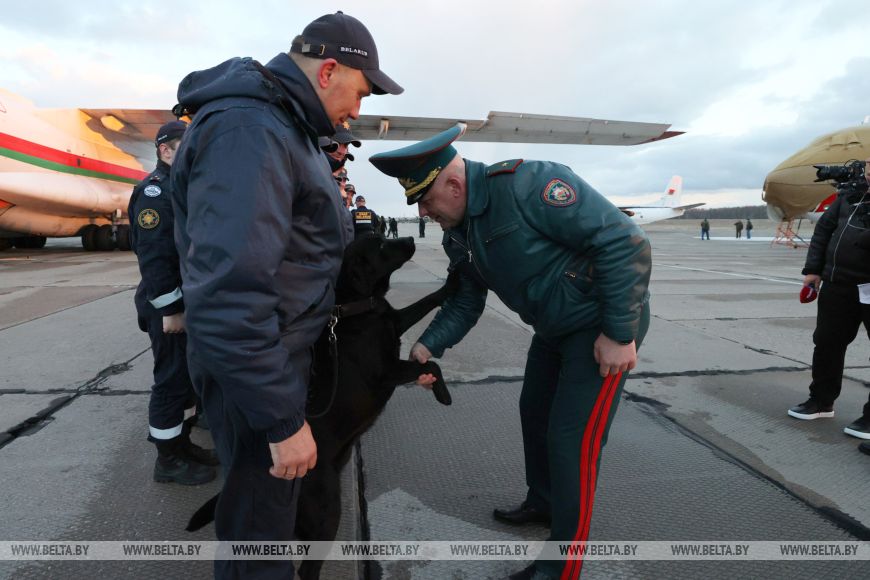
“Our task is to provide assistance on the scene: immobilization, anti-shock therapy, and pain relief. We have all the necessary medications and equipment for this, including sophisticated medical devices. We also have the necessary supplies of antiseptics, disinfectants and water disinfection to maintain normal epidemiological conditions in places of temporary deployment,” said Yuri Geleklidi, a doctor with the ZUBR special forces unit of the Belarusian Emergencies Ministry.

Why Lukashenko was awarded Myanmar’s highest government decoration
During a March visit to Minsk, Min Aung Hlaing presented the Order of the Union of Myanmar First Class to Aleksandr Lukashenko. The ceremony took place in the Palace of Independence after the talks between the leaders.
The Order of the Union of Myanmar is the highest civilian decoration bestowed by the government of Myanmar. Aleksandr Lukashenko was honroed with the award for his contribution to the development of friendly bilateral cooperation in various fields.

“This is an advance, as I understand. I will do my best to live up to the award,” the president said then.
Aleksandr Lukashenko promised to visit Myanmar soon, where, together with Min Aung Hlaing, he would review the implementation of existing agreements and outline new avenues for mutually beneficial cooperation.
Ahead of the visit, the Belarusian president approved Belarus-Myanmar draft intergovernmental agreements, including the draft agreement on a mutual visa waiver. But the main focus is on the economy. Among the signed documents is a draft agreement on cooperation in the customs sphere. It is intended to simplify the movement of goods between the countries, remove unnecessary barriers, and establish direct communication between relevant agencies. This could accelerate the creation of new trade chains and increase the volume of mutual exchange. Another key agreement relates to the elimination of double taxation, which is an important issue for businesses considering entering foreign markets.
A time of great opportunities is truly beginning for Belarus and Myanmar. Minsk has gained a new foothold in Southeast Asia, while Naypyidaw has found one in the very center of Europe. All that remains is to strengthen this strategic cooperation. So we lookforward to new and interesting developments.
In late March, a devastating earthquake struck Myanmar. Several thousand people were killed, and residential and public buildings, as well as infrastructure across the country, were damaged or destroyed. On the order of the Belarusian president, a search-and-rescue team from the Belarusian Emergencies Ministry and 20 tonnes of humanitarian aid (including sets of frame tents, blankets, and food supplies) were sent to Myanmar.

More than 30 Belarusian rescuers, dog handlers, and medical professionals assisted in eliminating the consequences of the earthquake and provided aid to victims after finding them in the rubble. The work continued without interruption despite difficult conditions and the threat of aftershocks that could further collapse damaged and unstable building structures.

“Our task is to provide assistance on the scene: immobilization, anti-shock therapy, and pain relief. We have all the necessary medications and equipment for this, including sophisticated medical devices. We also have the necessary supplies of antiseptics, disinfectants and water disinfection to maintain normal epidemiological conditions in places of temporary deployment,” said Yuri Geleklidi, a doctor with the ZUBR special forces unit of the Belarusian Emergencies Ministry.

Why Lukashenko was awarded Myanmar’s highest government decoration
During a March visit to Minsk, Min Aung Hlaing presented the Order of the Union of Myanmar First Class to Aleksandr Lukashenko. The ceremony took place in the Palace of Independence after the talks between the leaders.
The Order of the Union of Myanmar is the highest civilian decoration bestowed by the government of Myanmar. Aleksandr Lukashenko was honroed with the award for his contribution to the development of friendly bilateral cooperation in various fields.

“This is an advance, as I understand. I will do my best to live up to the award,” the president said then.
Aleksandr Lukashenko promised to visit Myanmar soon, where, together with Min Aung Hlaing, he would review the implementation of existing agreements and outline new avenues for mutually beneficial cooperation.
Ahead of the visit, the Belarusian president approved Belarus-Myanmar draft intergovernmental agreements, including the draft agreement on a mutual visa waiver. But the main focus is on the economy. Among the signed documents is a draft agreement on cooperation in the customs sphere. It is intended to simplify the movement of goods between the countries, remove unnecessary barriers, and establish direct communication between relevant agencies. This could accelerate the creation of new trade chains and increase the volume of mutual exchange. Another key agreement relates to the elimination of double taxation, which is an important issue for businesses considering entering foreign markets.
A time of great opportunities is truly beginning for Belarus and Myanmar. Minsk has gained a new foothold in Southeast Asia, while Naypyidaw has found one in the very center of Europe. All that remains is to strengthen this strategic cooperation. So we lookforward to new and interesting developments.




